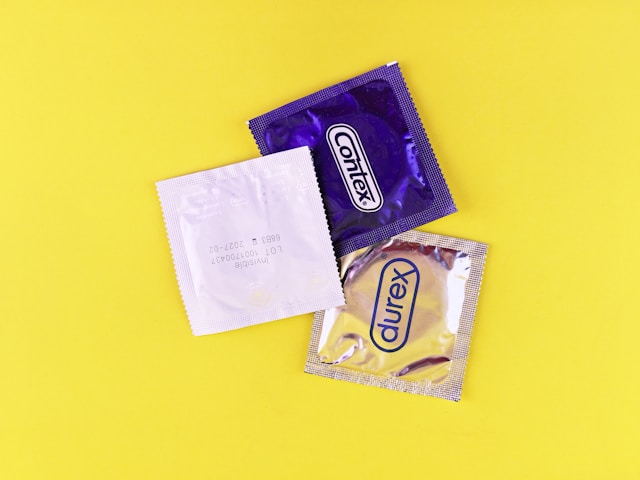A sheep-gut condom etched with a semi-nude nun and three aroused priests now takes centre stage in a bold sex-themed exhibit.
Visitors to Amsterdam’s Rijksmuseum are doing double-takes this month as a rare 200-year-old condom takes pride of place in a provocative new exhibition titled Safe Sex?—a bold exploration of 19th-century sex work and sexual health.
But this isn’t just any antique sheath. The featured item, dating to around 1830 and believed to be made from a sheep’s appendix, is a scandalous blend of contraception and commentary. Embossed with an erotic etching, the condom shows a partially undressed nun confidently pointing to the erect penises of three clergymen. Below the scene, a playful caption in French reads “Voilà, mon choix”—or “There, that’s my choice.”
Thought to have originated in an upscale Parisian brothel, the item is as much a satirical art piece as a contraceptive tool. The museum acquired it last November at a Haarlem auction for €1,000, marking the first time a condom has been added to the Rijksmuseum’s esteemed art collection.
Embed from Getty ImagesThe piece is already drawing gasps and giggles from visitors for its audacity and symbolism. Rijksmuseum curators suggest the image offers both “the playful and the serious side of sexual health,” referencing everything from erotic humour to the historical struggle for safer sex practices.
Interestingly, the composition may be a bawdy nod to Pierre-Auguste Renoir’s Judgment of Paris, in which the Trojan prince chooses between three goddesses. In this 19th-century remix, the ‘judging’ is left to a nun making her selection among three very mortal, very exposed clergy.
Made before vulcanised rubber revolutionised condom design in 1839, the sheath would have been a high-end luxury—less about reliable protection, more about novelty and elite indulgence. Such condoms were often reused and sometimes given as keepsakes to favoured clients.
“This was less about utility and more about flamboyant sexual culture in Europe’s elite brothels,” said a museum spokesperson. “What’s remarkable is how it blends cheeky iconography with an object historically tied to shame and secrecy.”
That blend is central to the Safe Sex? exhibition, which runs until the end of November. The show traces the paradoxes of 19th-century attitudes toward sex work, highlighting the tension between repression and desire, medical concern and erotic commerce.
Surrounding the antique condom are paintings, brothel tokens, health pamphlets, and other objects that chart the evolution of public health messaging and the realities of sex work in an era still haunted by disease and taboo. Yet nothing in the gallery quite matches the condom’s jaw-dropping blend of sacred and profane.
“It’s a brilliant example of how humour, satire, and subversion have always been part of sexual culture,” said one curator. “And it reminds us that even in centuries past, people knew how to laugh at power and lust.”
Not everyone is amused, however. Some conservative commentators in the Netherlands have called the exhibit “blasphemous,” accusing the museum of needlessly provoking religious sensibilities. But curators insist the exhibition is rooted in serious historical context, with humour used as a lens rather than a gimmick.
With the exhibit drawing international attention, many are making special trips to see the controversial artefact in person. For those with an appetite for history, provocation, and a little 19th-century mischief, the Rijksmuseum’s ancient condom may prove an unforgettable encounter.
